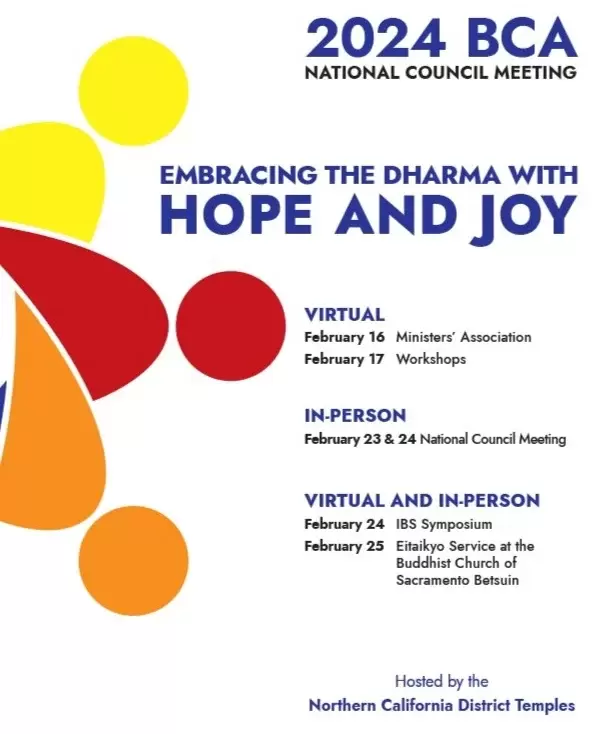It's July already. July means the beginning of Obon season. I came across a passage from the Traditions of Jodoshinshu Hongwanji-ha book by Reverends Masao Kodani and Russell Hamada.
The passage reminds us of the origins of Obon. I thought it would be a good reminder to all:
The origins of Obon can be traced to the Ulanbana Sutra which relates the story of Mahamaudgalyayana (Mogallana in Pali), the most gifted of Shakamuni Buddha's disciples in the area of extraordinary sense perceptions. A very filial son, Mahamaudgalyayana one day used his extraordinary powers to visualize the whereabouts of his mother who had died. Searching all the realms, from the highest of the heavens to the lowest of the hells, he was surprised and horrified to find his mother suffering the torments of the realm of Hungry Ghosts. With his powers again, he filled a bowl with food and sent it to his mother. The food burst into flames each time she put it to her mouth. Finding himself helpless in aiding his mother, he ran to the Buddha seeking help.
The Buddha tells Mahamaudgalyayana that he needs the combined help of all the monks to help his mother. He was told to bring offerings of food from land and sea, and sweets piled on a platter to the Sangha at the end of the Pravarana. The Pravarana was a period of retreat for the Buddha and his disciples during the rainy season in India. This was from the 15th of April to the 15th of July by the western calendar. Monks were forbidden to travel in order to avoid the killing of insects which multiplied greatly during the rainy season. They were to stay in one place to listen to the Buddha's talks, study and meditate. This tradition of study and meditation continued in China and Japan and was known as the uango (rain-quiet-stay) or Ango. Mahamaudgalyayana made the prescribed offerings and his mother and seven generations of his ancestors were relieved of their sufferings. Mahamaudgalyayana was so overjoyed that he clapped his hands and danced for joy.
This is said to have been the beginning of the Bon Odori.
Since that time, offerings of food and clothing were made to the monks at the end of their retreat on the 15th day of the 7th month. This custom was first observed in China in 538 AD, by the Liang Emperor Wu-ti.
In Japan, outdoor dancing called Bon Odori was added to the Obon observance and "welcome" and "sending off" lanterns or lights in various forms were lit for the spirits of one's ancestors. Jodoshinshu again does not look upon Obon as the time when the "souls" of one's ancestors return, and that the services, offerings, dancing, lights, etc. are for the benefit of one's dead relatives. It is rather a time to remember and honor all those who have passed on before us and to recognize the continuation of the influence of their deeds upon our lives. Obon is a time for self-reflection - an important Buddhists practice, for it is only when man becomes aware of his imperfections and insufficiency in contrast to his ideals that religion becomes a matter of personal concern.
Obon is also called the Gathering of Joy by Jodoshinshu Buddhists. It is not the happiness of getting what you desire, but the joy of being shown the Truth of what one is, no matter how damning that truth is to the image of our-ego-self. It is the joy of the awareness of being embraced in the Truth, in Amida Buddha, in Namoamidabutsu. Bon Odori too is not a dance of happiness, but rather a Dance of Joy.
Less us reflect on the true meaning of Obon.
Gassho,
Namu Amida Butsu
 RSS Feed
RSS Feed
